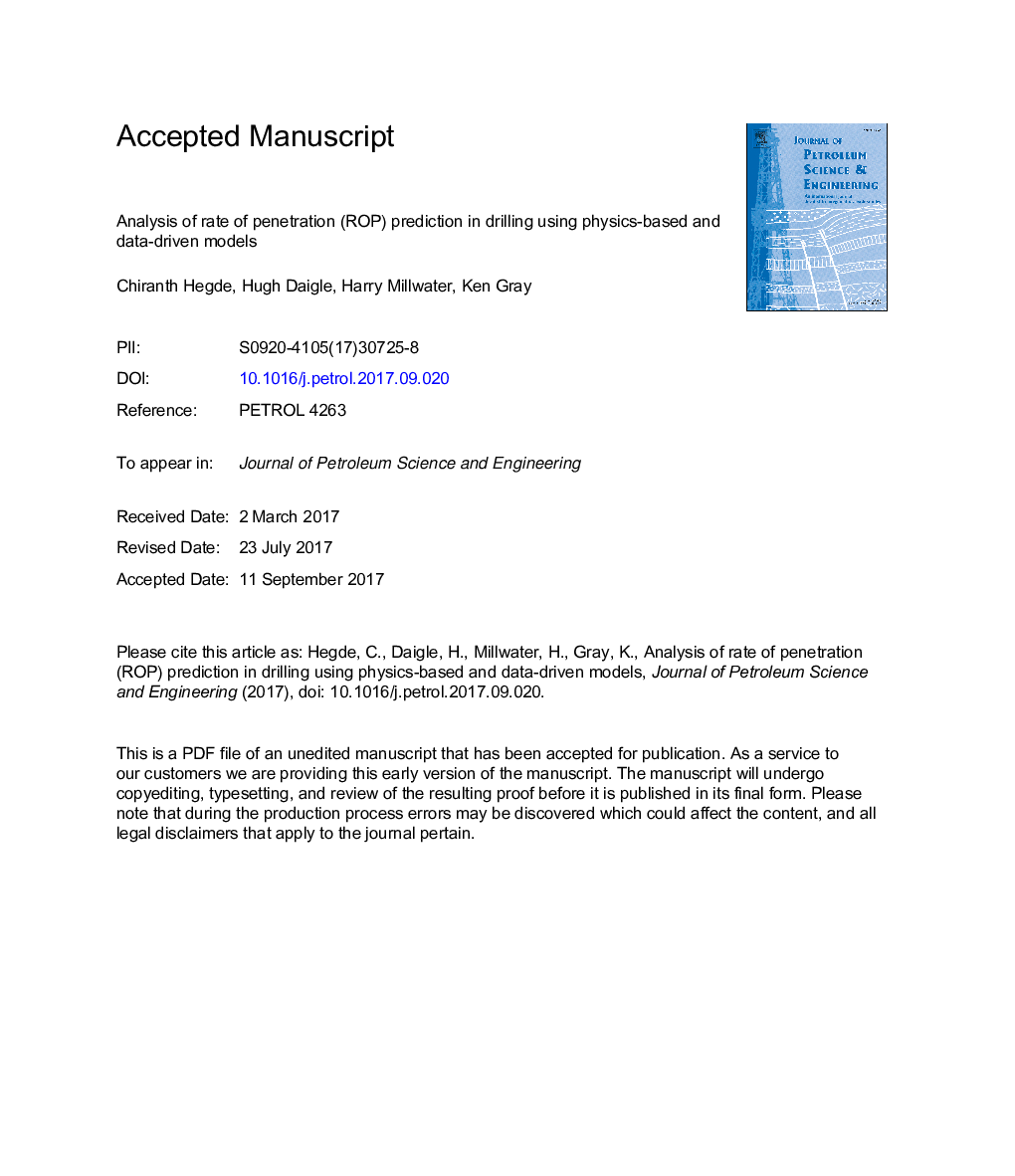| Article ID | Journal | Published Year | Pages | File Type |
|---|---|---|---|---|
| 5483863 | Journal of Petroleum Science and Engineering | 2017 | 30 Pages |
Abstract
Modeling the rate of penetration of the drill bit is essential for optimizing drilling operations. This paper evaluates two different approaches to ROP prediction: physics-based and data-driven modeling approach. Three physics-based models or traditional models have been compared to data-driven models. Data-driven models are built using machine learning algorithms, using surface measured input features - weight-on-bit, RPM, and flow rate - to predict ROP. Both models are used to predict ROP; models are compared with each other based on accuracy and goodness of fit (R2). Based on the results from these simulations, it was concluded that data-driven models are more accurate and provide a better fit than traditional models. Data-driven models performed better with a mean error of 12% and improve the R2 of ROP prediction from 0.12 to 0.84. The authors have formulated a method to calculate the uncertainty (confidence interval) of ROP predictions, which can be useful in engineering based drilling decisions.
Related Topics
Physical Sciences and Engineering
Earth and Planetary Sciences
Economic Geology
Authors
Chiranth Hegde, Hugh Daigle, Harry Millwater, Ken Gray,
